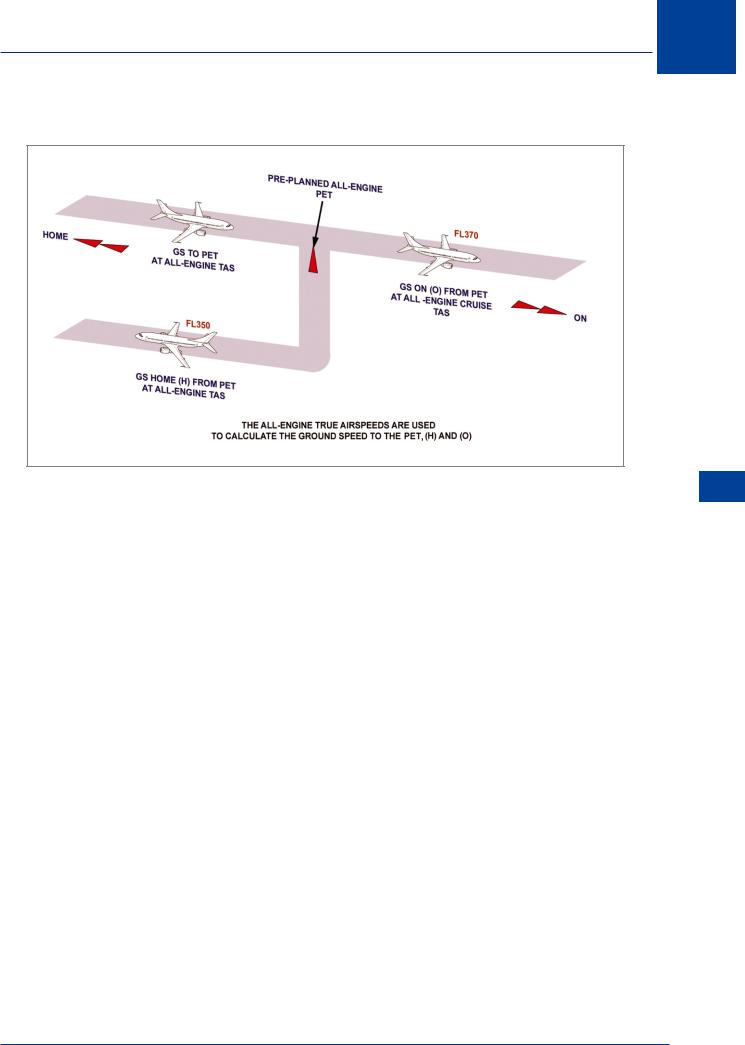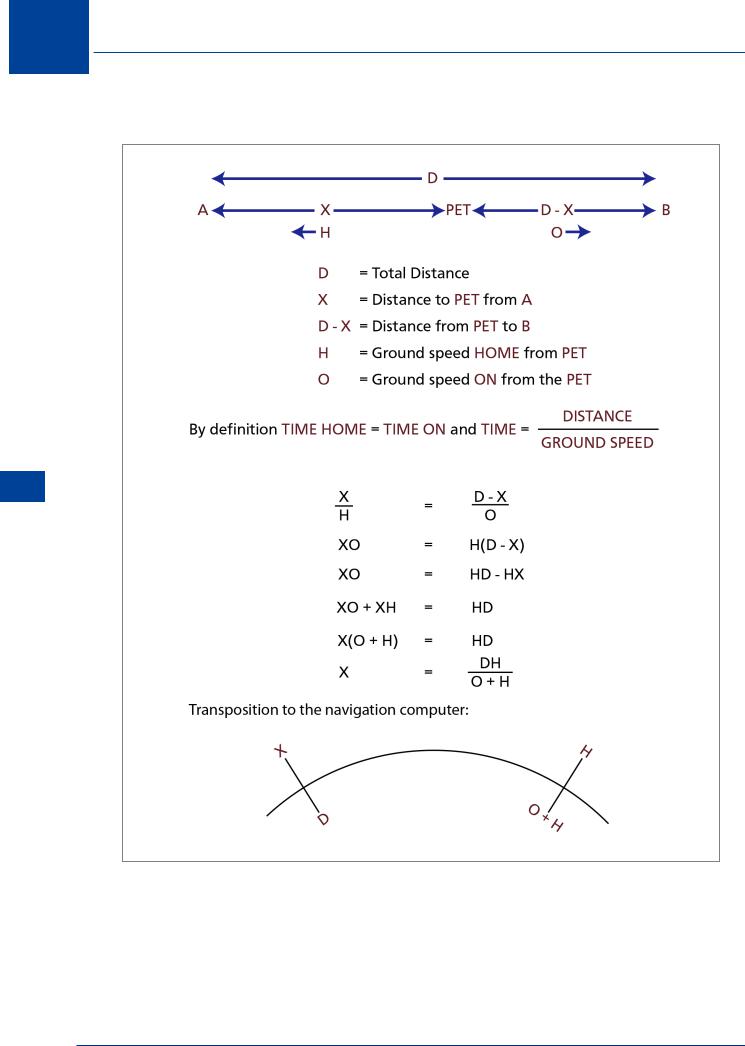
- •Textbook Series
- •Contents
- •1 Air Information Publications
- •Introduction
- •Format of an AIP
- •Automatic Terminal Information Service (ATIS)
- •Aerodrome Communication Facilities
- •Aerodrome Radio Navigation and Landing Aids
- •Other Sources
- •Search and Rescue
- •Questions
- •Answers
- •2 Fuel Policy and Fuel Monitoring
- •Universal Application of Fuel Policy
- •Realistic Trip Fuel
- •Reserve Fuel
- •Calculation of Contingency Fuel
- •Fuel Monitoring
- •Special Cases 1 – Decision Point Procedure
- •Special Cases 2 – Isolated Aerodrome Procedure
- •Questions
- •Answers
- •3 Nautical Air Miles
- •Nautical Air Miles
- •Questions
- •Answers
- •4 Single-engine Piston Aeroplane (SEP)
- •Introduction
- •Single-engine Piston Aeroplane
- •Cruise Power Settings Tables
- •Range Profile Figure
- •Endurance
- •Questions
- •Answers
- •5 Multi-engine Piston Aeroplane (MEP)
- •Introduction
- •MEP 1-Fuel, Time and Distance to Climb Data
- •MEP 1-Range at Standard Temperatures
- •MEP 1-Cruise Power Setting and Fuel Flow
- •MEP 1-True Airspeed
- •MEP 1-Endurance
- •MEP 1-Descent Fuel, Time and Distance
- •Questions
- •Answers
- •Introduction
- •Aeroplane Data and Constants
- •Optimum Cruise Altitude
- •Short Distance Cruise Altitude
- •Answers to Simplified Flight Planning
- •Questions
- •Answers
- •En Route Climb
- •Cruise/Integrated Range Tables
- •Questions
- •Answers
- •Descent Table
- •Exercise 1
- •Exercise 2
- •Answers to Integrated Flight Planning
- •8 MRJT Additional Procedures
- •ETOPS – CAP 697 MRJT1
- •Non-normal Operations
- •Fuel Tankering
- •Answers
- •9 Topographical Chart
- •Introduction
- •World Geodetic System of 1984 (WGS84)
- •Aeronautical Information
- •Topographical Information
- •Miscellaneous
- •Establishment of Minimum Flight Altitudes
- •The Minimum Grid Area Altitudes (Grid MORA)
- •Choosing Cruising Levels
- •Altimeter Errors and Corrections
- •Exercise 1
- •VFR Exercise 2
- •Answers
- •Exercise 1 Answers
- •VFR Exercise 2 Answers
- •10 Airways
- •Introduction
- •Air Traffic Services (ATS) Routes/Standard Routes
- •Area, Low and High Level Charts
- •Exercise 1
- •Exercise 2
- •Answers to Examples/Exercises
- •Answers Exercise 1
- •Answer Airways Exercise 2
- •Projection
- •Track Direction/Magnetic Variation/Distance
- •Grid Navigation
- •Exercise 1
- •Answers to Exercise 1
- •Exercise 2
- •Answers
- •AT(H/L) 1 & 2 Information
- •Exercise 3
- •12 ATC Flight Plan
- •Introduction
- •Definitions
- •Annexes to This Chapter
- •Specimen CA48
- •Item 19: Supplementary Information
- •Item 15
- •Use of DCT (Direct)
- •Exercise 1
- •Exercise 2
- •Exercise 3
- •Exercise 4
- •Answers
- •Annex 2
- •13 Point of Equal Time (PET)
- •Introduction
- •Derivation of Formula
- •The Effect of Wind on the Position of the PET:
- •Single Sector All-engine PET
- •Engine Failure PET
- •14 Point of Safe Return (PSR)
- •Introduction
- •Derivation of the Formula
- •Transposing the Formula to the Navigation Computer
- •The Effect of Wind on the Location of the PSR
- •Single Leg PSR
- •Derivation of the Formula for Variable Fuel Flows
- •15 Revision Questions
- •Revision Questions
- •Answers to Revision Questions
- •Specimen Examination Paper
- •Answers to Specimen Examination Paper
- •Explanations to Specimen Examination Paper
- •16 Index

Chapter
13
Point of Equal Time (PET)
Introduction |
|
|
|
243 |
Derivation of Formula . . . . . . . . . . . . . . . . . . . . . . |
. . |
. . |
|
. 244 |
The Effect of Wind on the Position of the PET: |
|
|
|
245 |
Single Sector All-engine PET . . . . . . . . . . . . . . . . . . . . |
. . |
. . |
|
. 246 |
Engine Failure PET . . . . . . . . . . . . . . . . . . . . . . . . |
. . |
. |
. |
247 |
Questions - 1 . . . . . . . . . . . . . . . . . . . . . . . . . . |
. . |
. |
. |
249 |
Answers - 1 . . . . . . . . . . . . . . . . . . . . . . . . . . |
. . |
. . |
|
. 252 |
Questions - 2 . . . . . . . . . . . . . . . . . . . . . . . . . . |
. . |
. |
. |
254 |
Answers - 2 . . . . . . . . . . . . . . . . . . . . . . . . . . |
. . |
. . |
|
. 256 |
241

13 Point of EqualTime (PET)
(PET) Time Equal of Point 13
242

Point of EqualTime (PET) 13
Introduction
Figure 13.1 All-engine Point of Equal Time (critical point)
The Point of Equal Time (PET), or sometimes referred to as Critical Point (CP) or Equal Time Point (ETP), is that track position, in relation to two suitable airfields, from which it is the same time for an aircraft to fly to either. These two airfields could be the departure and destination airfields, or any two airfields situated suitably in relation to the aircraft’s track.
The PET allows the pilot to decide quickly which of the two diversion airfields is the closer in time if there is a failure of an engine or a major system, or other event such as a serious illness on board. The fuel loaded for a flight (trip fuel, contingency allowance, holding and alternate fuel etc.) will be sufficient always for the aircraft to fly from the PET to either nominated airfield. The PET is a time problem. To make the time HOME from the PET equal to the time ON from the PET the two distances will be different, unless there is zero wind; in which case they are equal.
Routes over the oceans or remote parts of the world, where, in the event of an emergency, there is a scarcity of suitable en route diversions within reasonable flying time from any point on the proposed track, may necessitate the calculation of a PET between departure and destination airfields and those en route that are adequate.
For instance, a limit has been set on the distance a twin may be from an adequate airfield. This distance will be equal to one hour’s flight time, in still air, at the normal one-engine-inoperative cruise speed. Any operation planned beyond this distance from an adequate aerodrome is considered to be Extended Range Operations (EROPS) or Extended Twin Operations (ETOPS). Approved ETOPS requires the calculation of PETs between adequate airfields.
Point of Equal Time (PET) 13
243

13 Point of EqualTime (PET)
Derivation of Formula
(PET) Time Equal of Point 13
Figure 13.2 All-engine Point of Equal Time (critical point)
244
